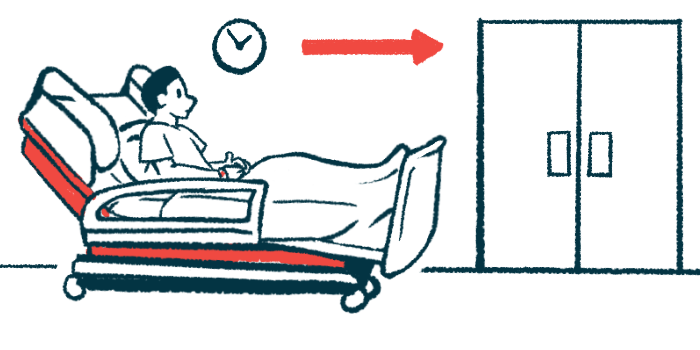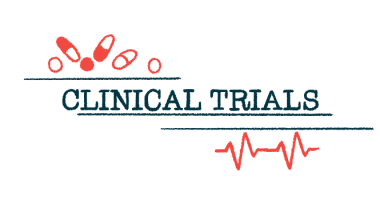High financial burden found for AHP patients, mostly tied to attacks
Acute porphyria also leads to reduced quality of life, real-world study finds

A high financial burden is associated with acute hepatic porphyria (AHP) — one particularly driven by hospitalization and medical costs to manage disease attacks — a new study found.
Also adding to the financial burden was time off work due to AHP, which averaged about two months per year for all study participants with active disease.
The study, dubbed COPHASE and led by researchers in Spain, also found that such acute porphyria had a negative impact on daily living, with pain, discomfort, anxiety, and depression having the greatest effects on health-related quality of life, according to patients.
“The COPHASE study shows that AHP in these patients is associated with a high economic impact, especially in periods of crises [attacks], affecting the performance of daily activities of living, which is reflected in a reduced quality of life,” the researchers wrote.
Their findings were reported in “The burden of disease and quality of life in patients with acute hepatic porphyria: COPHASE study,” published in the journal Medicina Clínica.
Costs of hospitalizations a large part of patients’ financial burden
AHPs refer to a group of porphyrias — genetic disorders caused by disruptions in the production of heme, which enables oxygen transport in the body — that includes acute intermittent porphyria (AIP), variegate porphyria (VP), hereditary coproporphyria (HCP), and ALAD porphyria. While different genetic defects cause each subtype, all are characterized by the harmful buildup of molecules called porphyrins in various tissues and organs.
People with AHPs experience a wide range of symptoms, including pain in the abdomen and back, and digestive and urinary problems. Changes in mental status, such as anxiety, confusion, hallucinations, and paranoia, also have been reported. Symptoms tend to emerge suddenly and can be severe, with attacks that can last from days to weeks before slowly subsiding.
Living with such symptoms can negatively impact a person’s health-related quality of life (HRQoL) in daily activities, as well as family, social, and working environments. Moreover, the regular use of healthcare resources and their associated costs — especially with emergency room visits and in-patient hospitalizations common among patients — add additional burdens to the lives of people with AHP.
Now, a team of researchers conducted a real-world study to determine the yearly medical and financial burden of AHP patients across Spain. The COPHASE study also assessed patients’ HRQoL and the workload of their caregivers. Alnylam Pharmaceuticals, which markets Givlaari (givosiran), an approved therapy for AHP, helped fund the study.
A total of 28 patients with a mean age of 36.6 were included in COPHASE. Most (89.3%) were women. Among them, 21 (75%) had been diagnosed with AIP, five (17.9%) with HCP, and two (7.1%) with VP. On average, there were 1.9 attacks during the one-year study period, with 46% of those occurring in women being related to menstruation.
A quarter of the patients were receiving preventive hemin therapy (sold as Panhematin). More than 80% had other medical conditions, known as comorbidities, such as metabolic and/or psychiatric disorders.
During a reported attack, 82.1% of the patients required in-patient hospitalization, with an average hospital stay of about nine days. Pharmacological therapy was given to 92.9% of the patients to manage the attack, with an average of 4.8 medications per person.
Nearly all patients (96.4%) attended visits with medical specialists during periods when they were not experiencing symptoms. Each patient completed an average of 27.7 lab tests — almost two times more than those performed for managing an attack, according to researchers. As many as 75% of the patients also required treatment when asymptomatic, with each receiving an average of 6.9 therapies.
At some point during the year, all patients with active disease — representing 67.9% of all study participants — were on sick leave, with an average of 59 days, or about two months off.
More than half of patients require help from a caregiver
Annual costs associated with AHP were on average €38,255.40 (about $40,400) per patient for an overall yearly total of €1,071,150.1 (more than $1.1 million). Nearly all of this cost — 85.9% — was driven by attack management.
Direct medical costs accounted for the highest proportion of total costs at 80.2%, with more than half of that financial burden (55.2%) attributed to medication for managing attacks. Hospital stays were the next greatest cost, at 32.6% of the burden. Between attacks, routine visits were associated with the highest costs, with specialist care at 24.3% and laboratory tests at 23.3%.
The highest direct non-medical cost during an attack was related to patient rehabilitation, at 55.2%, while social services drove costs in periods where patients were asymptomatic. Sick leave from work due to an AHP attack was the highest indirect cost, accounting for 70.9% of the total.
One specific statistic highlighted by researchers was the large number of patients — 53.7% — who needed help from a caregiver. All of the caregivers in this study were unpaid family members.
“Due to the disability that occurs secondary to AHP crises, more than half of the patients … required a caregiver, a striking fact considering the average age of these patients [is] 36.6,” the team wrote.
About half of the caregivers (53.3%) lost an average of 24.1 working days over the year for caregiving. This was not reported as an insurmountable burden, however, as just one caregiver (7.1%) reported extreme overload, as assessed by the Zarit questionnaire.
To the authors’ knowledge, the COPHASE study is the first that combines the evaluation of the health and financial burden, as well as the social effect and [health-related quality of life] of patients with AHP, … generating a complete perspective of the impact of the disease from the point of view of the patient and from the health field.
For patients, the day-to-day burden of the disease was a heavy one.
Assessments of health-related quality of life, using a questionnaire known as the EuroQol (EQ5D-5L), found the biggest issue to be pain/discomfort, affecting 71.4% of patients.
Anxiety/depression affected 50% of patients, while daily activities were impacted for 46.4%. The most commonly affected day-to-day activities were leisure time, for 74.1% of patients, travel/vacations for 66.7%, and household chores for 63%.
“To the authors’ knowledge, the COPHASE study is the first that combines the evaluation of the health and financial burden, as well as the social effect and HRQoL of patients with AHP, … generating a complete perspective of the impact of the disease from the point of view of the patient and from the health field,” the researchers wrote.







